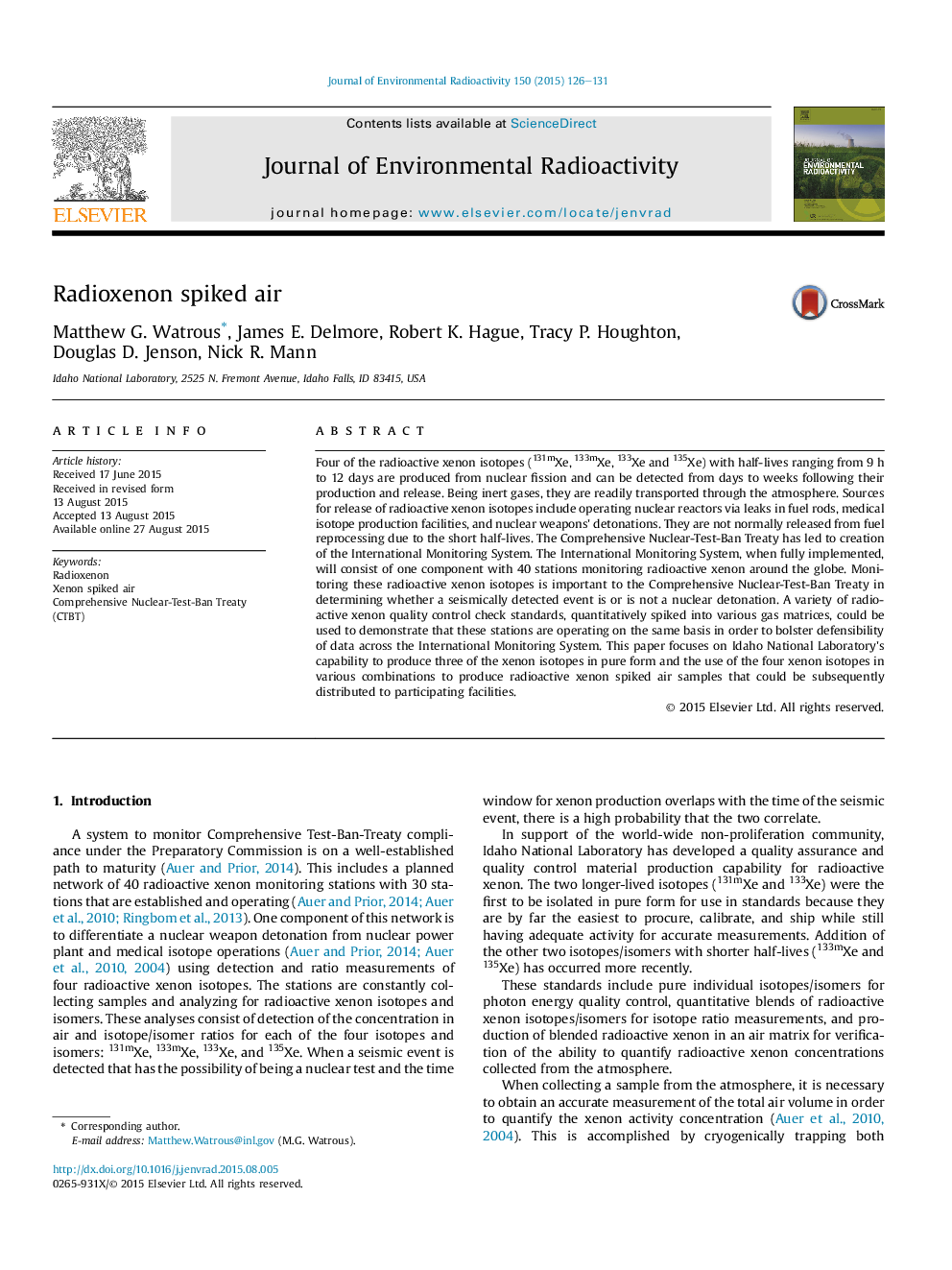| Article ID | Journal | Published Year | Pages | File Type |
|---|---|---|---|---|
| 1737795 | Journal of Environmental Radioactivity | 2015 | 6 Pages |
•A method for the production of radioactive xenon spiked air is presented.•Methods for isolation of individual 133Xe and 131mXe are described.•The ability to harvest fission generated xenon isotopes from 252Cf.•The produced materials are homogenous and allow sub-sampling from one initial mixture.
Four of the radioactive xenon isotopes (131mXe, 133mXe, 133Xe and 135Xe) with half-lives ranging from 9 h to 12 days are produced from nuclear fission and can be detected from days to weeks following their production and release. Being inert gases, they are readily transported through the atmosphere. Sources for release of radioactive xenon isotopes include operating nuclear reactors via leaks in fuel rods, medical isotope production facilities, and nuclear weapons' detonations. They are not normally released from fuel reprocessing due to the short half-lives. The Comprehensive Nuclear-Test-Ban Treaty has led to creation of the International Monitoring System. The International Monitoring System, when fully implemented, will consist of one component with 40 stations monitoring radioactive xenon around the globe. Monitoring these radioactive xenon isotopes is important to the Comprehensive Nuclear-Test-Ban Treaty in determining whether a seismically detected event is or is not a nuclear detonation. A variety of radioactive xenon quality control check standards, quantitatively spiked into various gas matrices, could be used to demonstrate that these stations are operating on the same basis in order to bolster defensibility of data across the International Monitoring System. This paper focuses on Idaho National Laboratory's capability to produce three of the xenon isotopes in pure form and the use of the four xenon isotopes in various combinations to produce radioactive xenon spiked air samples that could be subsequently distributed to participating facilities.
